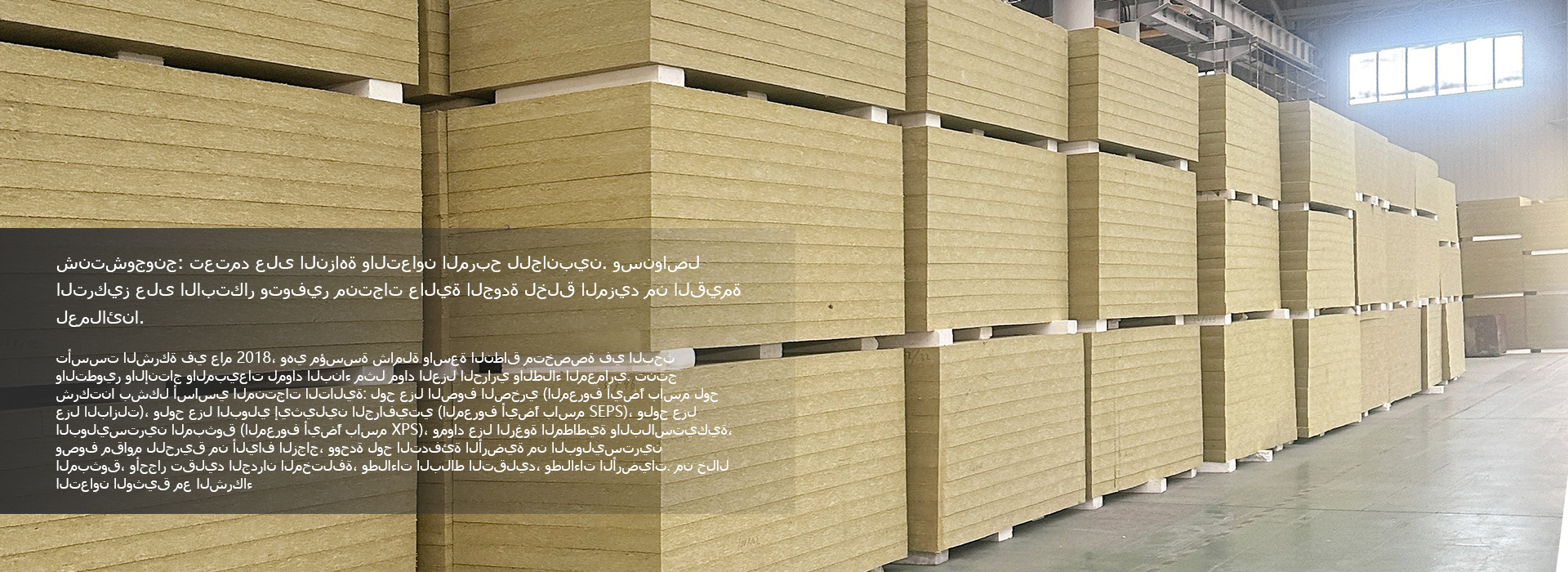What to Know Before Using SEPS Insulation Board in Renovations
Jun 09,2025

What to Know Before Using SEPS Insulation Board in Renovations
Introduction to SEPS Insulation Boards
In the world of construction and renovations, selecting the right insulation material can significantly impact energy efficiency, comfort, and overall performance of a building. One innovative option that has gained traction in recent years is SEPS (Expanded Polystyrene) insulation boards. Known for their versatility and effectiveness, SEPS boards are increasingly being utilized across various applications. In this article, we will delve into everything you need to know about SEPS insulation boards before incorporating them into your renovation projects.
Understanding SEPS Insulation Boards
What Are SEPS Insulation Boards?
SEPS insulation boards are made from expanded polystyrene, a lightweight and rigid foam material. They are designed to provide excellent thermal insulation, making them ideal for both residential and commercial buildings. Their unique structure allows for low thermal conductivity, which translates to lower energy consumption for heating and cooling.
Properties of SEPS Insulation Boards
The effectiveness of SEPS insulation boards can be attributed to several key properties:
- **Thermal Performance**: With a high R-value, SEPS boards offer superior insulation, helping to maintain indoor temperatures and reduce energy costs.
- **Moisture Resistance**: SEPS is inherently resistant to moisture, preventing mold growth and structural damage.
- **Lightweight Construction**: The lightweight nature of SEPS boards facilitates easy handling and installation.
- **Eco-Friendly Option**: Many SEPS products are made from recycled materials, aligning with sustainable building practices.
The Benefits of Using SEPS Insulation Boards in Renovations
Energy Efficiency and Cost Savings
Incorporating SEPS insulation boards into your renovation can lead to significant energy savings. By preventing heat loss in winter and heat gain in summer, these boards reduce the need for extensive heating and cooling systems. Homeowners can expect lower utility bills, making SEPS boards a cost-effective choice in the long run.
Improved Comfort Levels
A well-insulated home is a comfortable home. SEPS insulation boards create a stable indoor environment, minimizing drafts and cold spots. This enhanced comfort is especially vital in areas with extreme weather conditions.
Sound Insulation Properties
In addition to thermal benefits, SEPS boards also provide sound insulation. Their density helps in reducing noise transmission between rooms and from outside sources, contributing to a peaceful living environment.
Versatility in Applications
SEPS boards are versatile and can be used in various applications:
- **Walls**: Effective for both exterior and interior wall insulation.
- **Roofs**: Ideal for flat or sloped roofs, providing thermal protection.
- **Floors**: Suitable for ground and suspended floors, enhancing energy efficiency.
Installation Process of SEPS Insulation Boards
Preparation Steps for Installation
Before installing SEPS insulation boards, proper preparation is essential:
1. **Assess the Area**: Evaluate the space where insulation will be installed to determine the required thickness and number of boards.
2. **Clean the Surface**: Ensure that the installation surface is clean, dry, and free from debris to guarantee good adhesion.
3. **Gather Tools and Materials**: Required tools may include a utility knife, measuring tape, adhesive, and protective gear.
Step-by-Step Installation Guide
1. **Measure and Cut the Boards**: Accurate measurements will ensure a snug fit. Use a utility knife to cut the boards to size.
2. **Apply Adhesive**: Apply a suitable adhesive to the back of the SEPS board, following the manufacturer's instructions.
3. **Position the Boards**: Firmly press the boards onto the surface, ensuring they are level and aligned.
4. **Seal Joints**: Use foam sealant or tape to seal any joints between boards to enhance thermal performance.
5. **Finish with Covering Material**: Depending on the application, finish the installation with drywall, siding, or other materials.
Considerations When Using SEPS Insulation Boards
Thermal Bridging
Thermal bridging occurs when heat flows through conductive materials, reducing the overall effectiveness of insulation. To mitigate this, ensure proper installation techniques, such as overlapping boards and sealing joints effectively.
Fire Safety Regulations
Since SEPS is a plastic material, it is essential to check local building codes and fire safety regulations regarding its use. Some regions may require specific treatments or coverings to enhance fire resistance.
Environmental Impact and Recycling
SEPS boards can have a lower environmental impact when sourced from recycled materials. It’s advisable to choose products that meet sustainability standards. After their useful life, consider recycling options to minimize waste.
Common Myths About SEPS Insulation Boards
Myth 1: SEPS Boards Are Not Durable
Contrary to this belief, SEPS boards are highly durable and resistant to wear and tear. Proper installation further enhances their longevity.
Myth 2: SEPS Insulation Is Expensive
While initial costs may appear higher than some traditional materials, the energy savings and long-term benefits often outweigh these initial investments.
Myth 3: SEPS Boards Are Not Eco-Friendly
Many SEPS products on the market are made from recycled materials, making them a green building choice. Always look for certifications indicating environmental compliance.
Conclusion
In summary, SEPS insulation boards present an excellent option for renovations aimed at enhancing energy efficiency, comfort, and sustainability. Their versatile applications, combined with favorable thermal and sound insulation properties, make them an attractive choice for various projects. Proper installation and adherence to safety regulations are crucial to maximizing their benefits. By understanding the advantages and considerations of SEPS boards, homeowners and contractors can confidently incorporate this innovative material into their next renovation project.
Frequently Asked Questions (FAQs)
1. What is the R-value of SEPS insulation boards?
The R-value of SEPS insulation boards typically ranges from 3.6 to 4.2 per inch, depending on the specific product and thickness.
2. Can SEPS boards be used in exterior applications?
Yes, SEPS insulation boards are suitable for exterior applications, including walls, roofs, and foundations, offering excellent thermal performance.
3. How do I maintain SEPS insulation boards?
SEPS boards require minimal maintenance, but it is advisable to inspect them regularly for physical damage and ensure that they remain covered and sealed.
4. Are SEPS insulation boards water-resistant?
Yes, SEPS boards exhibit good water resistance, preventing moisture absorption and mold growth, making them ideal for humid environments.
5. Can I install SEPS insulation boards myself, or should I hire a professional?
While DIY installation is possible, hiring a professional ensures proper installation techniques and compliance with local building codes, maximizing the effectiveness of your insulation.
Contact Us
Company:Sunjoy (Tianjin) Tecnology Go.,Ltd
General Manager: White Eric
Email: admin@sunjoy-rockwool.com
Wechat: +86 18002010981
Tel: +86 4009950775
Address: Room 1002, Juding Buliding, Jinnan District, Tianjin.china


